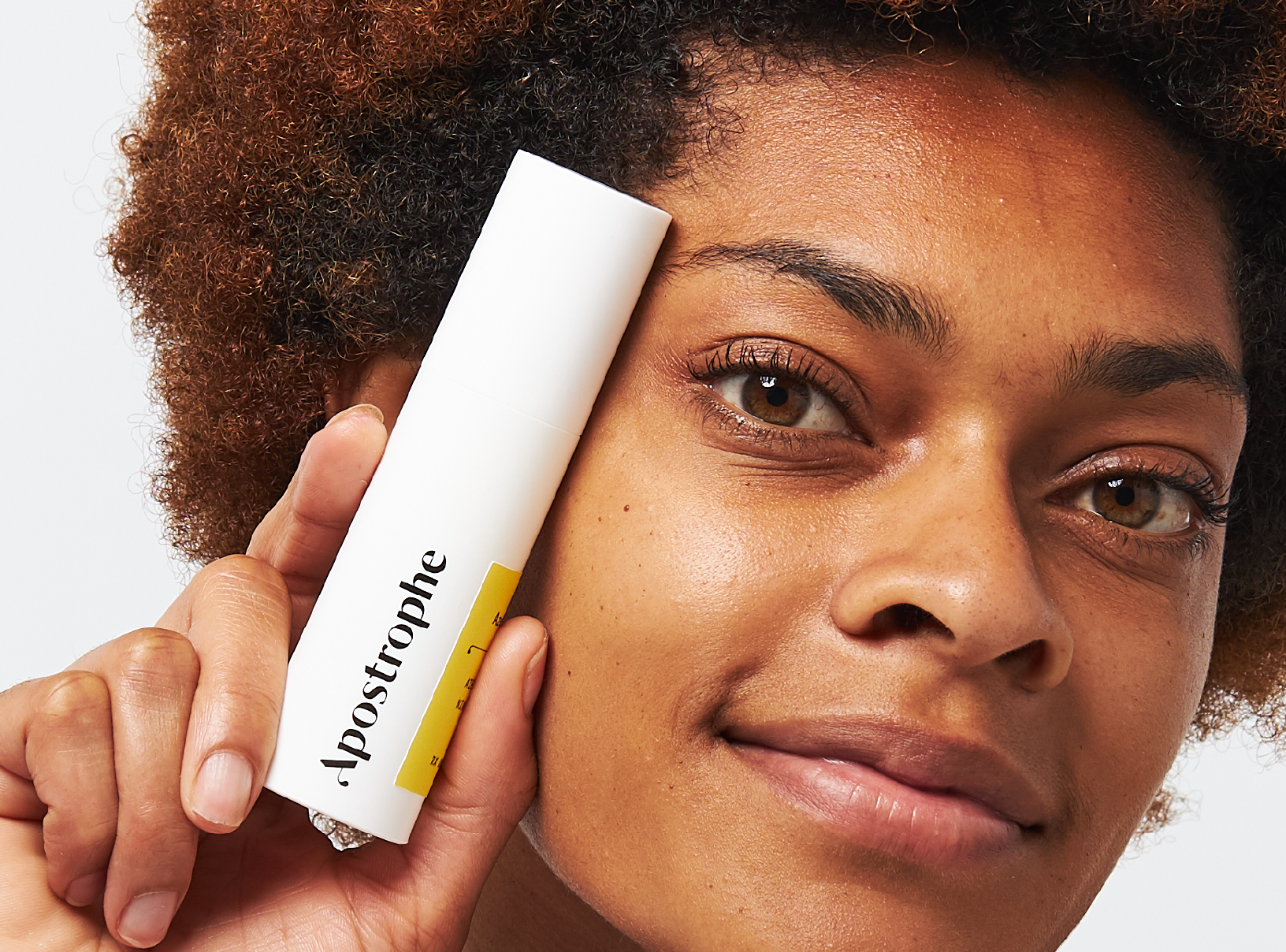Education
When To See a Dermatologist: 7 Reasons


SHARE
Education
When To See a Dermatologist: 7 Reasons
Medically reviewed by Vicky Davis, FNP
Written by Apostrophe Team
Last updated 4/1/2024
Unless you’re a hypochondriac, there’s a good chance you avoid doctor visits unless they’re absolutely necessary.
Many people feel this way, and will forego appointments they don’t deem necessary with the simple excuse that they “feel fine.”
This is, as you probably know already, a generally bad strategy.
Most health conditions are better treated before the most serious symptoms begin to set in, and doctors are way better at seeing the signs of these conditions than you will ever be (yes, even after all that reading on WebMD).
Whether you’re on top of your appointment schedule or lagging behind, a lot of people are unsure of what the right “reasons” for visiting a dermatologist are, and how often you should see one.
Dermatologists are never going to chide you for visiting too often, but there are some basic reasons you should make visiting a dermatologist a priority, based on signs and signals your skin is giving you. Let’s break them down.
Issues That Should Bring You to a Dermatologist
According to Cleveland Clinic, things like mild acne, rosacea, warts, and minor rashes, as well as bug bites and cysts can be handled by a primary care doctor.
But there are several conditions that would require a dermatologist including a rash or skin problem covering more than 10 percent of your body; ulcers that won’t heal after a week or two; and inflammation.
Here are seven reasons you should see a dermatologist, according to the American Academy of Dermatology Association:
A mole or patch of skin that has changed, which could be an indication of skin cancer.
Stubborn or persistent acne.
Itchy hives or rashes that won’t go away, which could indicate an allergic reaction or infection.
Scars with less than desirable experiences, which may be reduced with treatment.
Persistent skin irritation, which could indicate a chronic skin condition or allergies.
Nail disorders, ingrown nails, or fungus, which could be indicators for other problems.
Hair loss, which can be treated with prescriptions and other therapies.
This is a fairly complete list, encompassing both the reasons and the context for when and why a doctor would be the right next step.
But this also does not mean that you should delay reaching out if you’re worried about something related to your skin and haven’t waited the appropriate amount of time. There’s never harm in being too vigilant with your body’s biggest organ.
Why You Should See A Dermatologist
Dermatologists offer certain benefits for skin condition treatment that aren’t necessarily guaranteed by visiting a primary care doctor, according to the Cleveland Clinic.
One of those is a faster diagnosis, as a specialist can more readily recognize patterns that are worrisome.
Another important reason a dermatologist might be a better choice is to prevent scarring—dermatologists treat things like scalp conditions and hair loss, as well as severe acne, leaving less room for the potential of scar formation.
According to the American Academy of Dermatology Association, dermatologists will also be better suited to remove blemishes like skin tags, where they can minimize the infection risk and stop blood loss, as well as limit scarring.
There’s also the question of signs of aging.
Nobody wants to have wrinkles, sun spots, or other issues that come over time, and while they’re generally benign, they’re also under the realm of dermatology, and therefore under a dermatologist’s authority.
You may see your wrinkles as natural and unavoidable based on your age, but if you feel they’re coming too soon, and too aggressively, then you should consider consulting a dermatologist.
A dermatologist may make any number of recommendations, from lifestyle changes to skincare routines.
They may also offer you procedures like dermal fillers, botox, or surgical procedures to tighten and flatten the skin in cosmetically pleasing ways.
If you’re seeing signs of aging, consider going to a doctor for anti-aging treatment.
How Often Should I See a Dermatologist?
It is generally recommended that you see a dermatologist once a year, though the recommended frequency of visits increases with both your general risk of skin cancer and your history of positive results for skin cancer.
In other words, start with annual visits, and make appointments more frequently based on your risks and history.
Whether you’re losing hair, seeing changes in your nails, dealing with acne, or just have a spot that needs more attention, there’s no reason to delay and very little reason to avoid scheduling a visit for your safety.
Final Thoughts
Skin conditions are some of the most frustrating medical issues we can have, because the symptoms are often on display for everyone to see unless we go to great lengths to cover them up.
While an oblong or asymmetrical mole may motivate you to seek help immediately, other conditions should probably receive the same attention.
We’re not saying an itchy patch is as dangerous as a potential skin cancer site, but as mentioned above, seemingly benign issues with your skin, hair, and nails can be signs of looming issues with far more serious consequences.
It’s not just about being over-careful: visiting a dermatologist is important preventative medical diligence that you should invest time (and a little money) into for your future.
10 Sources
Scars: Diagnosis and treatment. (n.d.). Retrieved April 21, 2021, from https://www.aad.org/public/diseases/a-z/scars-treatment.
5 reasons to see a dermatologist for mole, skin tag removal. (n.d.). Retrieved March 20, 2021, from https://www.aad.org/public/diseases/a-z/mole-skin-tag-removal.
Team, F. (2020, October 13). Got skin problems? How you can tell when a specialist is best. Retrieved March 23, 2021, from https://health.clevelandclinic.org/got-skin-problems-can-tell-specialist-best/.
When should you see a dermatologist? (n.d.). Retrieved March 19, 2021, from https://healthcare.utah.edu/dermatology/when-to-see-dermatologist.php.
When is a mole a problem? (n.d.). Retrieved April 21, 2021, from https://www.aad.org/public/diseases/a-z/when-is-a-mole-a-problem.
Treating acne? Is it time to see a dermatologist? (n.d.). Retrieved April 21, 2021, from https://www.aad.org/public/diseases/acne/diy/when-derm.
12 nail changes a Dermatologist should examine. (n.d.). Retrieved April 21, 2021, from https://www.aad.org/public/everyday-care/nail-care-secrets/basics/nail-changes-dermatologist-should-examine.
10 reasons your SKIN Itches uncontrollably and how to get relief. (n.d.). Retrieved April 21, 2021, from https://www.aad.org/public/everyday-care/itchy-skin/itch-relief/relieve-uncontrollably-itchy-skin.
Rash 101 in adults: When to seek medical treatment. (n.d.). Retrieved April 21, 2021, from https://www.aad.org/public/everyday-care/itchy-skin/rash/rash-101.
Hair loss: Diagnosis and treatment. (n.d.). Retrieved April 21, 2021, from https://www.aad.org/public/diseases/hair-loss/treatment/diagnosis-treat.
Like what you just read? Sign up for our email list to get the scoop on skincare science delivered straight to your inbox.

Deep Dives
A dermatologist shares his thoughts on the recent studies about benzoyl peroxide and benzene.
Read More
Education
What is milia?
What is milia? Today, we’re jumping into one type of bump that you may have heard about most commonly in infants — milia.
Read More
Education
Best moisturizer for acne-prone skin
If you have combination acne-prone skin, figuring out which moisturizer is best for your skin might be tough. In this guide, we break down the best moisturizer for combination, acne-prone skin.
Read More
